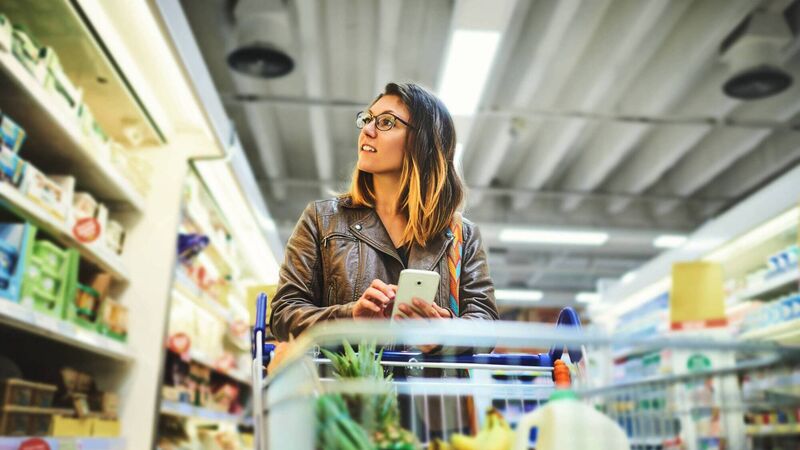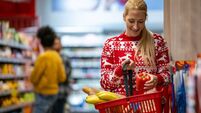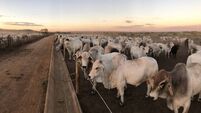Prices are rising in almost every facet of Irish life and nowhere is that more noticeable than in your local supermarket.
Despite being one of the most competitive sectors of the Irish economy where rival chains battle each other for cheaper deals in an effort to secure more market share, the price of almost all goods has risen significantly with no immediate end in sight. At the same time, supermarket chains have been regularly picketed by farming groups demanding better prices for the food they produce.
What is known anecdotally by shoppers in the aisles is backed by hard data from bodies like the Central Statistics Office (CSO) and consultants Kantar who monitor supermarket prices and shows the increases that have occurred.
In August, food in Ireland cost, on average, 8.8% more in than the same month in 2021, latest figures from the CSO shows.
The data shows the increases for a range of separate items. One kilogram of Irish cheese is up by more than a €1, sirloin steak up be almost €2 per kg, pork sausages are up by 30c per kg and a 2.5kg bag of potatoes.
While much the current price rises in Ireland and in many other countries can be blamed on the combined impacts of the Covid-19 pandemic and the war in Ukraine it is clear that higher food prices are here to stay.

As one of the world’s largest grain producers, the impact of the war in Ukraine has been significant but it is not alone. Brazil, the world’s top soybean exporter, suffered from severe drought in 2021. China’s wheat crop has been among the worst ever this year. Indonesia banned most exports of palm oil in late April to ensure domestic supplies of cooking oil, cutting off supplies from the world’s largest producer of the edible oil used in everything from cakes to margarine.
Throughout the pandemic, high vegetable oil prices have helped drive up broader food costs. Cereal prices also hit a record in March, a result of limited shipments of corn and wheat during the Ukraine war.
At thew same time, Ireland joins much of the globe in efforts to make a significant and rapid reduction in the amount of greenhouse gases it produces. As a result, much focus has fallen on the agricultural sector and food producers.
For a country like Ireland, which producers far more food than it consumes and helping to feed populations all over the world, the plan to cut emissions by 25% by the end of this decade proves a significant challenge.
Along with improved and more efficient ways of farming, the State is examining ways to reduce the levels of emissions from the national herd. How we get to that 2030 target will inevitably lead to further increases in food prices.
There are hopes that prices will stop their dramatic rise in 2023 but there is little expectation that they will fall.
UN Secretary-General Antonio Guterres said in early May the problem of global food security could not be solved without restoring Ukrainian agricultural production and Russian food and fertiliser output to the world market.
The World Bank forecasts wheat prices could rise more than 40% this year The Bank expects agricultural prices to fall in 2023 versus 2022. But that depends on increased crop supplies from Argentina, Brazil and the United States — by no means guaranteed.
The sharp rise in fertiliser prices, as countries avoid buying from major producers Russia and its ally Belarus, could discourage farmers from applying adequate crop nutrients to their fields. That could bring down yields and result in lower production, prolonging the crisis. As the climate warms, extreme weather is becoming more common - posing another risk to crop production.
In their analysis, Kantar said take home grocery sales in Ireland increased by 3.6% in the 12 weeks to the end of September, thanks to a record 12.4% grocery price inflation.
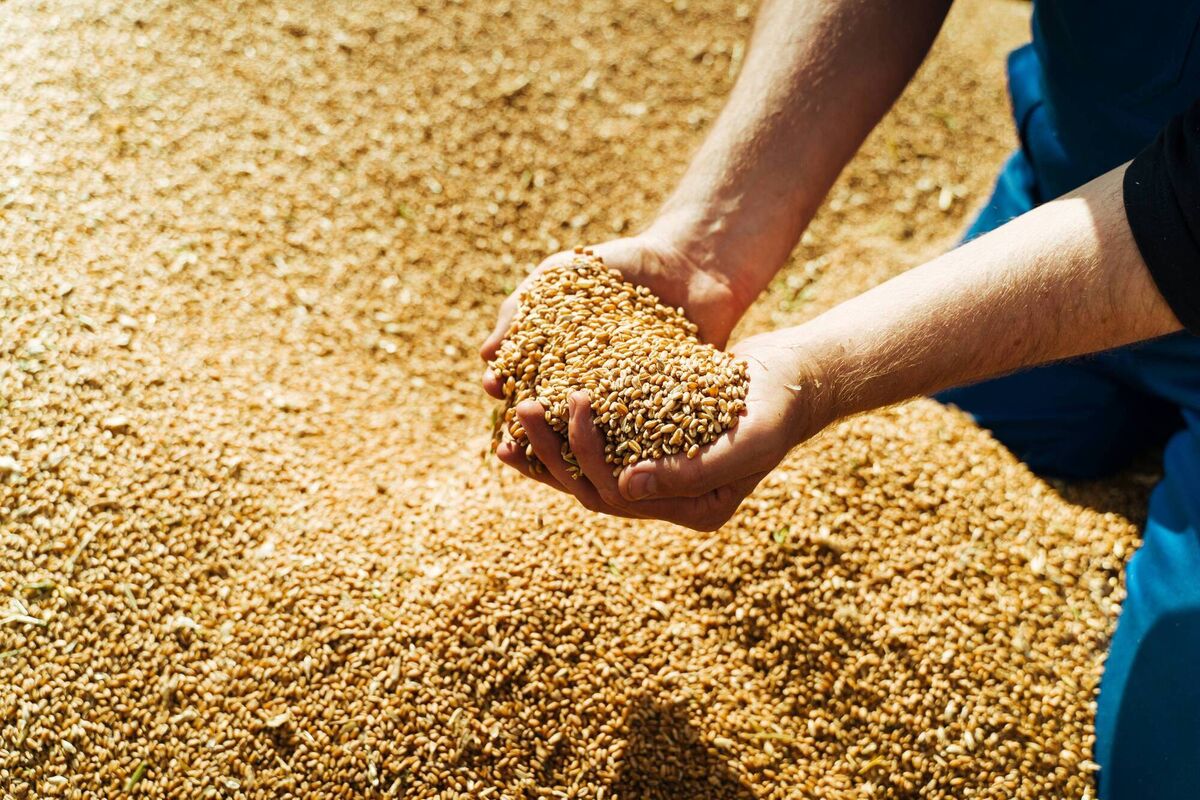
In the four weeks to October 3, the price of essentials like butter, milk and bread rose by 28%. The figures mean the average annual grocery bill will go from €6,999 to €7,867 if consumers don’t make any changes to what they buy and how they shop to cut costs. This means the average annual shop is set to rise by €868 a year. At a basket level, that’s an extra €3.36 per trip.
“Grocery price inflation is at its highest level since Kantar began tracking grocery price inflation,” Emer Healy, Kantar senior analyst said.
“As food and drink prices continue to climb alongside other financial pressures, 32% of shoppers in Ireland admit they are ‘struggling’ to make ends meet, a figure that has increased from 23% in March of this year.”
As consumers change their shopping behaviour to deal with the extra pressures on household budgets, supermarket own-label ranges are benefitting. The sales of retailer own-label lines jumped 7.2% in the latest 12 weeks with shoppers spending an additional €88.3m year-on-year.
Value own-label ranges saw the strongest growth, up 23.5% year-on-year with shoppers spending an additional €11.3m.
As household budgets tighten, shoppers are looking to their food and drink spend for small luxuries to enjoy at home. As a result sales of branded take-home soft drinks, chocolate biscuit bars and crisps jumped 5.4%, 10.9% and 6.5% respectively.
The report shows online sales saw a decline for the first time since March 2022, with shoppers decreasing their trips online by 5.5% and replacing that with trips to physical stores instead. In the last four weeks, online visits were down 3% and volumes fell by 6.4% with 1.8% of shoppers leaving the online platform in October.
Among all the retailers in the Irish grocery market, Dunnes has the highest share with 22.7% and growth of 8.2% year-on-year. This growth stems from an influx of new shoppers, up 5.3%, which contributed an additional €32.3m to their performance.
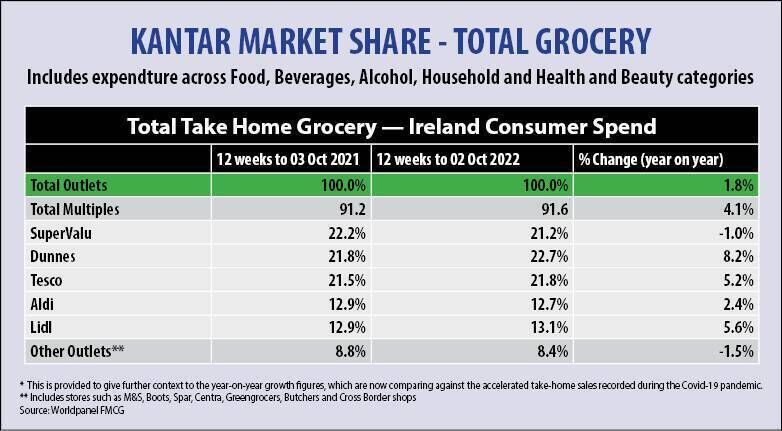
Tesco holds 21.8% of the market with growth of 5.2% year-on-year thanks to an 8.9% increase in shoppers returning to store more often. SuperValu holds 21.2% of the market and continues to see shoppers make the most trips in-store with an average of 21.2 trips per year.
Lidl holds 13.1% share with growth of 5.6% year-on-year. New shoppers contributed an additional €11.8m to their performance, alongside existing shoppers returning more often. Aldi holds 12.7% of the market with growth of 2.4% year-on-year.
Combined with these record price increases, consumer confidence has unsurprisingly fallen. A household survey carried out by Bank of Ireland found that one in every three homes is “Just Managing” to make ends meet. This figure increases to 53% for low-income households.
A resolution to the war in Ukraine and a reduction in energy prices may result in a moderation in food price inflation however the prices we are seeing today are unlikely to come down and, in all probability, will increase further in 2023.
Beyond that, climate change, depleting natural resources, a global scramble for land and water, the need to produce food in a more environmentally and sustainable manner all for an increasing global population will mean it will remain a major challenge for the countries like Ireland and others around the world to produce food in sufficient quantities to feed the world.
